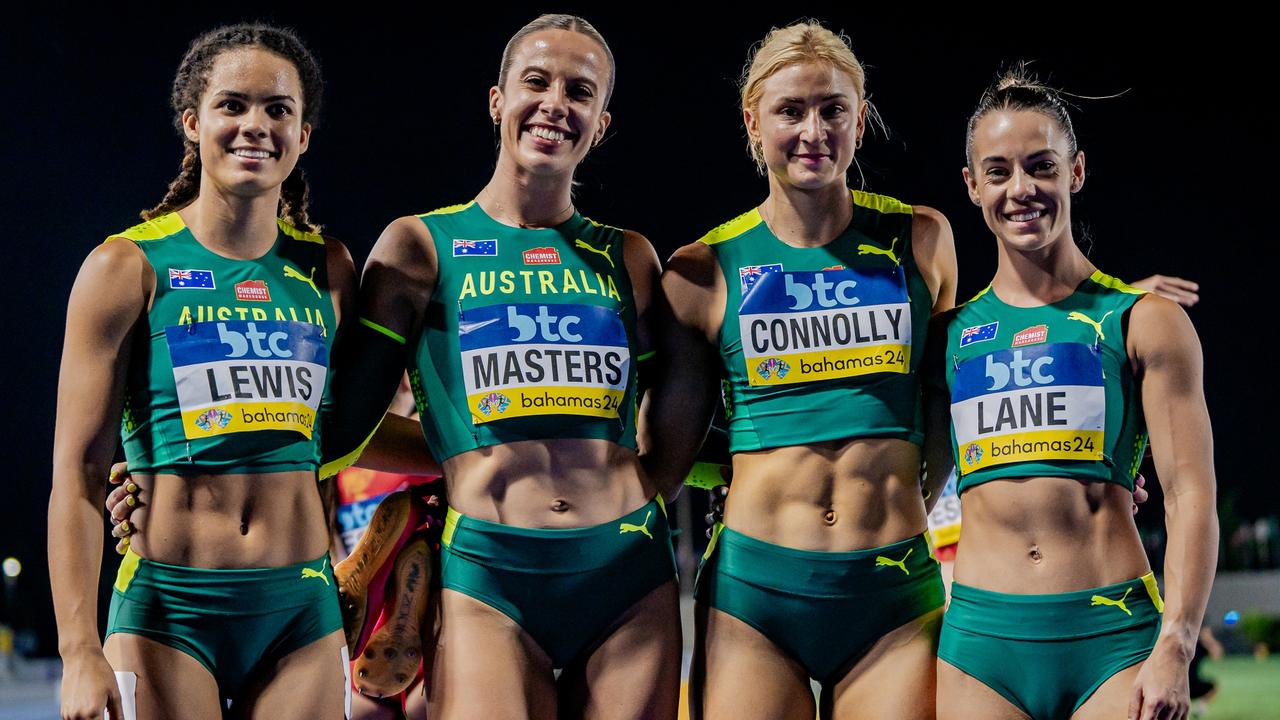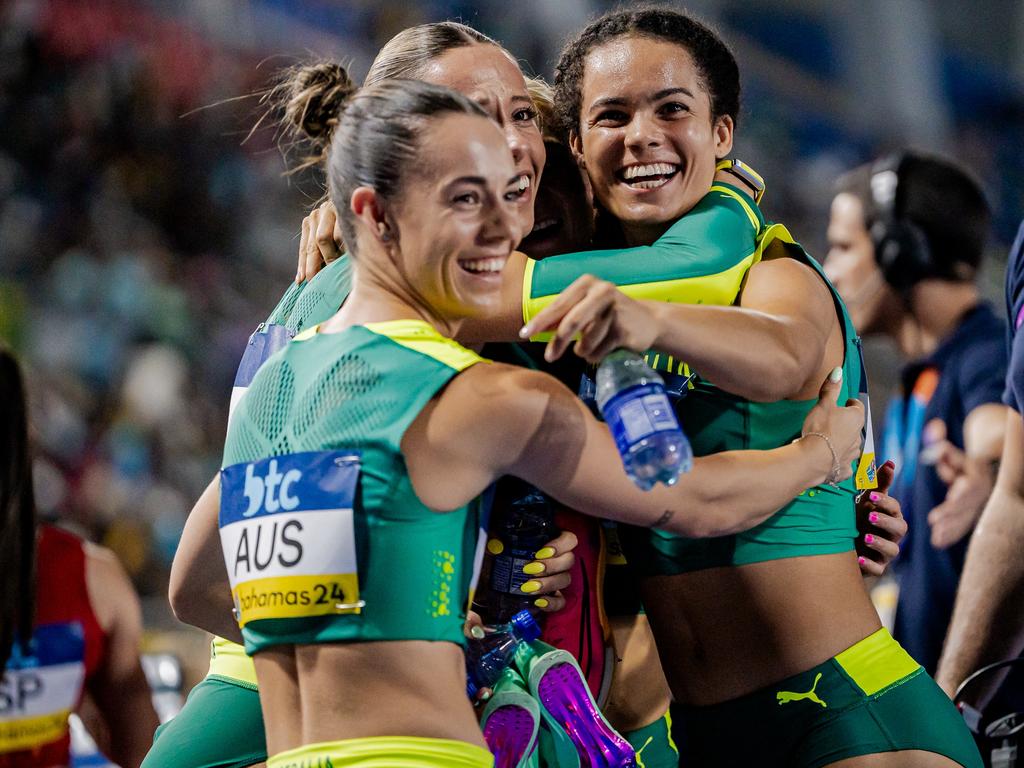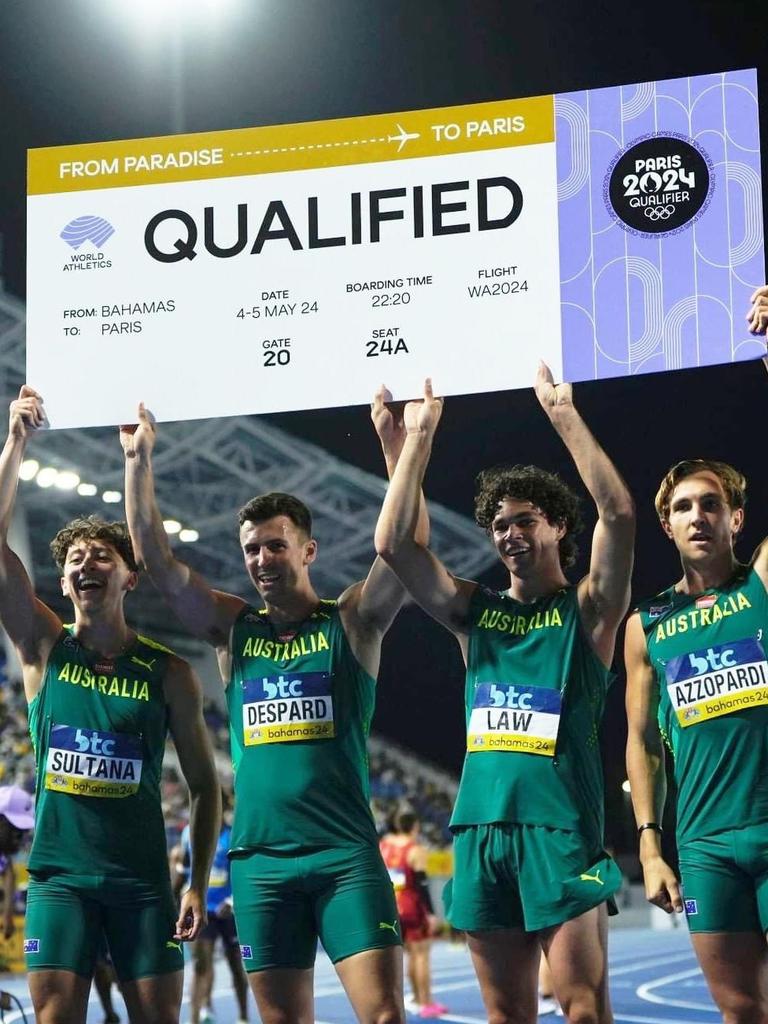Teenage sensation leads Aussies to Commonwealth record and Paris
Teenager Torrie Lewis has helped lead Australia’s 4x100m relay team break an Olympics hoodoo that has dogged the track and field squad for nearly a quarter of a century

READING LEVEL: GREEN
For the first time since the Sydney 2000 Olympics, Australia will field a 4x100m women’s relay team at the Paris Olympic Games.
A record-breaking performance in the opening round of the World Athletics Relay Championships in the Bahamas* has secured Australia’s best female sprinters a slot in Paris.
Led by rising superstar Torrie Lewis, the team, which included Bree Masters, Ella Connolly and Ebony Lane, finished second in its heat in a Commonwealth record time of 42.83 seconds.

The top two teams from each heat directly advanced to the final. Given the top 14 teams at the end of the championship lock in their spot for Paris, the Aussies were able to celebrate after Lewis went over the line to secure* second spot ahead of Cote D’Ivoire’s World Championships medallist Marie-Josee Ta Lou-Smith.
Germany won the heat but there was an anxious wait to see which team had secured second spot before the judge deemed the photo finish had Australia just ahead.
“I saw three people leave at the same time and I was like, ‘Oh my god, we have to run’,” Lewis said.
“Then I saw Ta Lou-Smith go past but then we were fine and now we’re going to the Olympics.”

Masters, who ran the second leg, said: “I’m so speechless. I had full faith that we could do it but we actually did it and it’s just wild.
“To have that automatic Olympic qualification is so, so exciting.”
Connolly, who passed the baton* to Lewis on the final exchange, said months of dedication* had paid off for the team.
“I think we all had a lot of trust in each other so we said, ‘You know what, let’s just relax’,” she said.
“We’ve done the work and we’ve done this a million times. Let’s just go do this and qualify for the Olympics together.”

The men’s 4x100m team also claimed its Olympics berth on Monday in the repechage* round. Sebastian Sultana, Jacob Despard, Calab Law and Joshua Azzopardi missed out on direct qualification by four-thousandths of a second after they were edged out of second spot by Jamaica in their heat.
Needing a top two finish in the repechage round given their world ranking had fallen out of the top 16, Australia duly delivered with a 38.46 run to finished second behind South Africa (38.46) and ahead of Colombia (39.04).

“We’ve got a good group of boys at the moment in the (relay) team,” Despard said last month. “I think we can do something special, we’re already knocking on the door of the Australian record.”
Team USA won both finals, while Olympics host nation France came second in the women’s final and third in the men’s and Australia finished fifth in the women’s final.
POLL
GLOSSARY
- Bahamas: group of over 700 coral islands (about 20 of which are inhabited) in the Caribbean
- secure: take possession of, hold, lock in place
- baton: any of the various sticks used in relay races and marching bands
- dedication: commitment, giving a lot of time and energy to something because it is important
- repechage: when players or teams who come very close but fail to get through to the next round of a competition are allowed to continue competing
EXTRA READING
Olympic flame lights path to Paris
Podium payday for Olympic gold
14-year-old skater chases Olympics
QUICK QUIZ
- When was the last time Australia fielded a women’s 4x100 relay team at an Olympics?
- What was the Commonwealth record time that secured the team’s ticket to Paris?
- The men missed out on direct qualification by what very slim margin?
- Why did the men’s team need a top two finish in the repechage round?
- Which country won both of the 4x100m relay finals?
LISTEN TO THIS STORY
CLASSROOM ACTIVITIES
1. Relay maths*
The women’s relay team qualified for the Olympics with the time of 42.83 seconds.
How many seconds on average did it take for each of the women to complete their 100m section?
The men’s team also qualified for the Olympics with their time of 38.46 seconds. What is the average time for each of the men in their heat?
How many Olympics has it been since we had a women’s 4x100m relay team?
Time: allow 10 minutes to complete this activity
Curriculum Links: Mathematics, Critical and Creative Thinking
2. Extension
How will the Australian women’s and men’s relay teams aim to improve their times to help them be serious medal contenders in the Paris 2024 Summer Olympic Games?
What tips would you give them to help them speed up?
–
–
–
Time: allow 10 minutes to complete this activity
Curriculum Links: English, Science, Health and Physical Education, Personal and Social, Critical and Creative Thinking
*Relay maths answers:
• 10.70 seconds each x 4
• 9.61 seconds each x 4
• Five
VCOP ACTIVITY
Relay race language challenge
Objective:
To explore language features such as descriptive language, vocabulary, and sequencing in the article.
Here is a list of the language features in the article, but only the ones students have been focusing on for identification are included. You may like to also include a definitions cheat sheet to help them.
Descriptive language, vocabulary, sequencing, direct speech, past tense verbs, adjectives, adverbs, proper nouns, conjunctions, comparative adjectives, superlative adjectives, prepositions, present participles, present tense verbs, compound words, onomatopoeia, exclamations, interjections, similes, metaphors
Materials needed:
– Stopwatch or timer (optional)
– Flashcards with different language features written on them (e.g., descriptive language, vocabulary, sequencing)
Instructions:
Set up (six minutes):
– Gather the children in a circle or sitting area where everyone can see and hear each other.
– Explain to the children that they will participate in a relay race to explore different language features from the article. Next, explain each language feature flashcard you have and give an example (not from the article). For extension, you may like to add a few red herrings of language feature cards that do not appear in the article.
– Divide the children into two teams and line them up in rows.
– Place the flashcards with language features at the opposite end of the room. When you say “Go!”, the first player from each team races to the flashcards, picks one and quickly reads the language feature on it.
– The player then returns to their team and shares an example of that language feature from the article.
– Once they have shared their example, the next player runs to the flashcards to pick another language feature.
– Continue until all players have had a turn.
Guess the language feature (three minutes):
– After each player shares an example, the rest of their team tries to guess which language features it represents (e.g. descriptive language, vocabulary, sequencing).
– Encourage discussion and reasoning among team members as they make their guesses.
Review and reflect (one minute):
– After all players have had a turn, gather the children together to review the language features explored during the relay race.
– Discuss examples from the article representing each language feature, reinforcing understanding and comprehension.
– Reflect on the importance of using different language features to make stories and descriptions more interesting.
Example language features:
– Descriptive language: words or phrases that create vivid images in the reader’s mind (e.g. “record-breaking performance”, “sprinting superstar”).
– Vocabulary: specific words used to convey meaning and enhance understanding (e.g. “repechage”, “qualification”).
– Sequencing: the order in which events occur in a story or passage (e.g. “first”, “next”, “finally”).
Extension (optional):
– For an added challenge, incorporate a stopwatch or timer to see which team can complete the relay race in the shortest amount of time.
– Encourage the children to develop their own examples of language features from the article or create a mini-story using the language features they’ve explored.

